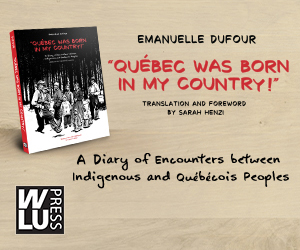nêhiyawêwin (cree) in contemporary literature
âkayasimowin misiwê itê. [english is everywhere]. kitohcikanihk [on the radio]. cikâstêpayihcikanihk [on the television]. âcimowasinahikanâhk [in newspapers]. ayapîhkêsîs isi-pîkiskwêwinihk [on the internet]. akâyasimowin misiwê itê [english is everywhere]. âkayasimowin misiwê itê [english everywhere].
âkayasimowin tâpiskôc nîpiy ka-osâmicîwahk misiwê itê [english is like a water which flows over everything]. âkayasimowin connects. but, âkayasimowin also fractures. it takes place away from indigenous languages. contemporary indigenous writers need to struggle against this, and to make a place for the sound of our ancestors. key to making this place of sound, is retrieve our languages, including nêhiyawêwin (cree), but also to think of contemporary terms for the world that we find ourselves in today.
i think that sometimes indigenous languages can be used in a preliminary manner - for example in chapter titles and the odd word embedded in english text. these attempts to incorporate indigenous languages into contemporary indigenous literature are helpful and should be encouraged. aya, nayêstaw ayiwak [but there should be more]. isolated words help in the revitalization of indigenous languages. however, building upon this, with more layers, adds a depth to indigenous language revitalization. throughout neechie hustle, i have used cree. i have used cree in the names of some of the characters and some descriptions. most importantly, I have used cree in the some of the dialogue between the characters.
in neechie hustle, the dialogue allows us to know some of the characters through nêhiyawêwin rather than simply through âkayasimowin. nêhiyawêwin nuances the text, nuances the narrative, and enriches the characters. when characters are depicted in two different languages in the same novel, it creates the text simultaneously in two arenas of sound- two linguistic locations and two cultural locations. what perhaps makes the use of nêhiyawêwin unique in neechie hustle is that the languages of nêhiyawêwin and âkayasimowin are completely organically woven together.
it is my hope that more writers will incorporate nêhiyawêwin, and other indigenous languages, in their work. there are different layers and different ways our languages will emerge in contemporary literature.
Your CanLit News
Subscribe to Open Book’s newsletter to get local book events, literary content, writing tips, and more in your inbox
note: there is no capitalization in cree. because this blog has both cree and english, i chosen not to capitalize either language so as not to aesthetically privilege either.
The views expressed in the Writer-in-Residence blogs are those held by the authors and do not necessarily reflect the views of Open Book.

